California Ground Squirrel
- December 19, 2023
- 0 comment
The California Ground Squirrel (Otospermophilus beecheyi) is a fascinating rodent species native to the western United States, particularly prevalent in California. These energetic creatures often find themselves entangled in conflicts with humans due to their burrowing habits, which can pose challenges for agricultural activities and infrastructure. Despite their charming appearance and endearing behaviors, these squirrels can become pests in certain contexts. In terms of legal status, regulations surrounding the control or removal of California Ground Squirrels vary, with some regions offering protection and others allowing measures to manage their populations.
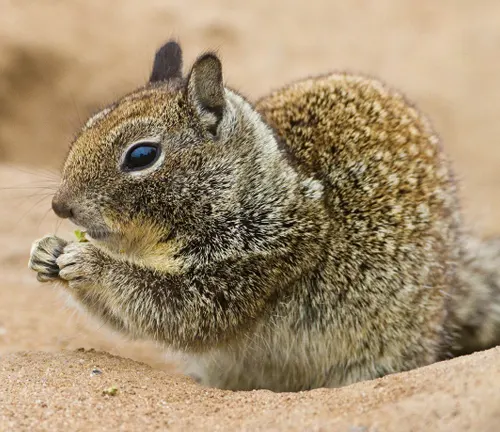
Identifying the California Ground Squirrel is relatively straightforward, as they exhibit a distinctive appearance characterized by a mottled fur coat with shades of brown, gray, and cream. Their small size and bushy tails contribute to their overall charm. These diurnal rodents are known for their agility and quick movements, making them a common sight in a variety of habitats, from grasslands to wooded areas. The species range of the California Ground Squirrel extends beyond California, encompassing parts of Oregon and Nevada.
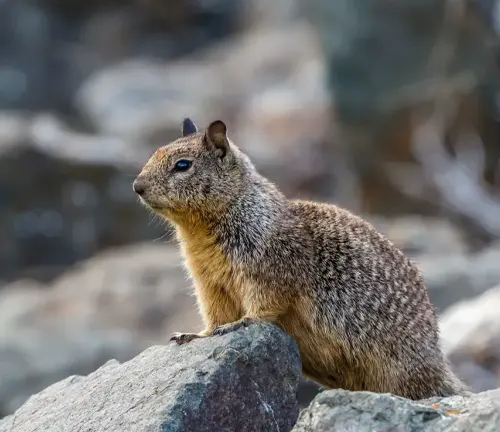
While these creatures may seem harmless, there are health and safety concerns associated with their presence. California Ground Squirrels can carry diseases such as plague, posing a potential risk to humans and other animals. Additionally, their burrowing activities may undermine structures, creating safety hazards. As a result, it becomes essential for communities to strike a balance between coexisting with these native rodents and mitigating the potential risks they pose. Overall, understanding the behaviors, legal status, and ecological roles of the California Ground Squirrel is crucial for fostering harmonious relationships between humans and wildlife in their shared environments.
| Aspect | Specification |
|---|---|
| Scientific Name | Otospermophilus beecheyi |
| Size | Small, typically around 9 to 11 inches in length |
| Tail Length | Bushy tail, approximately 6 to 9 inches long |
| Coloration | Mottled fur with shades of brown, gray, and cream |
| Habitat | Varied, including grasslands, woodlands, and meadows |
| Behavior | Diurnal, active during daylight hours |
| Range | Western United States, notably California, Oregon, and Nevada |
| Legal Status | Varies by region, some protection and management regulations |
| Conflicts | Burrowing habits may conflict with agriculture and infrastructure |
| Health Risks | Potential carriers of diseases such as plague |
| Safety Concerns | Burrows may undermine structures, posing safety hazards |
Unveiling the World of the California Ground Squirrel

General Biology of the California Ground Squirrel
The California Ground Squirrel, scientifically known as Otospermophilus beecheyi, is a captivating rodent species native to the western United States. With a size ranging from 9 to 11 inches and a distinctive mottled fur coat, these small creatures are a common sight in various habitats, showcasing a remarkable adaptation to their surroundings.
Reproduction
Reproduction is a vital aspect of the California Ground Squirrel’s life cycle. Females typically give birth to litters of four to six pups in the spring, and the young are raised in carefully constructed burrows. The reproductive habits of these squirrels play a crucial role in maintaining their population and ensuring their survival in diverse environments.
Behavior
Known for their diurnal nature, California Ground Squirrels are active during daylight hours, showcasing agility and quick movements. Their behavior involves foraging for food, engaging in social interactions, and diligently patrolling their territories. Understanding their behavior is essential for coexisting with these native rodents.
Nesting/Denning Cover
The California Ground Squirrel exhibits a fascinating nesting and denning behavior. They create intricate burrow systems for shelter and protection. These burrows not only serve as homes but also play a crucial role in regulating body temperature, especially during extreme weather conditions.
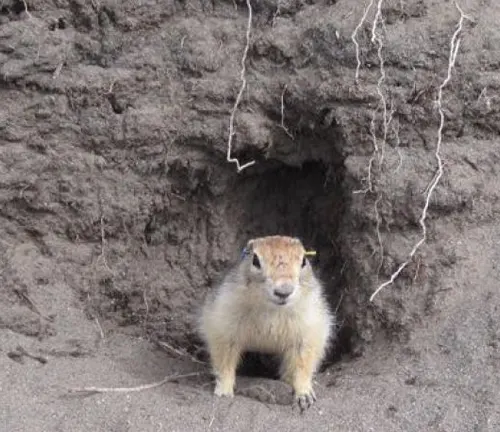
Habitat Preferences
These adaptable rodents thrive in various habitats, ranging from grasslands and meadows to woodlands. Their ability to inhabit diverse environments highlights their ecological flexibility and contributes to their widespread distribution in the western United States.

Food Habits
California Ground Squirrels are omnivores with a diverse diet. Their menu includes seeds, nuts, fruits, insects, and even small vertebrates. Their feeding habits contribute to the ecological balance in their habitats, showcasing their role as integral components of local ecosystems.
Voice, Sounds, Tracks, and Signs
Communication is a vital aspect of the California Ground Squirrel’s behavior. While they are not known for elaborate vocalizations, they communicate through various sounds and gestures. Their tracks and signs, such as distinctive burrow entrances, provide valuable insights into their presence and activities in a given area.
Damage Identification Caused by California Ground Squirrels
Damage to Landscapes
The charming presence of California Ground Squirrels in the landscape can come at a cost. These rodents, with their burrowing habits, can cause significant damage to landscapes. Their burrows, often strategically placed for shelter and nesting, can disrupt the integrity of lawns, gardens, and recreational areas. Understanding the extent of landscape damage is crucial for communities seeking a balance between wildlife conservation and property maintenance.
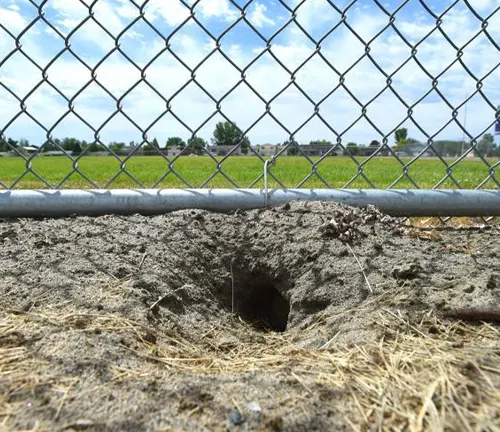
Damage to Crops and Livestock
In the agricultural realm, the California Ground Squirrel poses challenges to crops and livestock. Their voracious appetite includes a variety of plants, seeds, and nuts, making them potential threats to agricultural yields. Additionally, their burrows may lead to soil erosion and pose tripping hazards for both humans and livestock. Farmers and ranchers must navigate the complexities of coexistence while mitigating the economic impact of crop and livestock damage.

Damage to Structures
The California Ground Squirrel’s penchant for burrowing extends beyond open landscapes to structures, creating concerns for homeowners and infrastructure managers alike. Their burrows can undermine the stability of structures, including foundations, sidewalks, and retaining walls. As these rodents dig, they may compromise the integrity of man-made constructions, leading to safety hazards and costly repairs. Evaluating and addressing the potential damage to structures becomes imperative for maintaining both safety and the structural integrity of urban and suburban environments.
Damage Prevention and Control Methods for the California Ground Squirrel
Balancing Nature and Infrastructure
One key approach to managing California Ground Squirrel-related damage is habitat modification. By understanding their preferred environments, communities can make strategic changes to discourage habitation in specific areas. This method involves altering landscapes in ways that make them less appealing to these rodents, promoting a harmonious coexistence between human infrastructure and wildlife.
Building Defenses Against Burrowing Intruders
Exclusion measures are pivotal in safeguarding structures and landscapes from California Ground Squirrel activities. This involves creating barriers or using materials that prevent access to vulnerable areas. From installing fencing around gardens to fortifying foundations against burrowing, exclusion acts as a proactive defence, limiting the potential for structural damage caused by these industrious rodents.
Employing Technology to Deter Squirrels
In the realm of innovative solutions, frightening devices emerge as a technology-driven strategy. These devices utilize sound, light, or motion to create an environment that is inhospitable for California Ground Squirrels. By leveraging the latest technological advancements, communities can deter these rodents without resorting to harmful methods, fostering a safe and humane approach to wildlife management.

Nature-Friendly Aversion Tactics
Repellents offer an eco-friendly alternative to managing California Ground Squirrel activity. Through the use of natural substances or specially formulated compounds, these repellents create an environment that these rodents find unappealing. This method serves as a gentle deterrent, encouraging the squirrels to seek alternative habitats without causing harm to them or the ecosystem.
A Controversial Approach to Population Control
Toxicants represent a more controversial method of California Ground Squirrel control. While effective in reducing populations, the use of chemical agents poses environmental and ethical concerns. Striking a balance between population management and ecological responsibility is essential when considering toxicants as part of an integrated pest management strategy.
Precision in Population Management
Shooting, when performed responsibly and within legal frameworks, can be an effective method for controlling California Ground Squirrel populations. This targeted approach requires skill and precision, aiming to manage local populations without causing unnecessary harm to other wildlife or ecosystems.
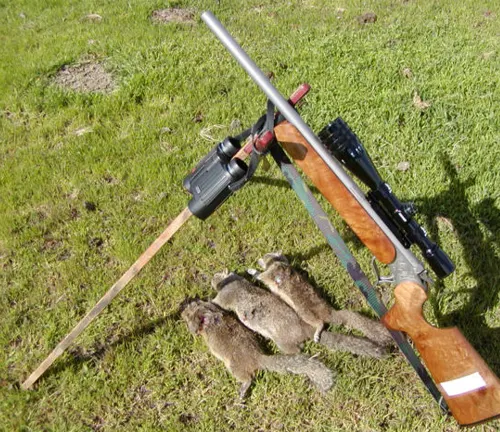
A Humane Approach to Population Reduction
Trapping provides a humane way to manage California Ground Squirrel populations. By using live traps, communities can capture and relocate these rodents to more suitable habitats. This approach emphasizes compassion while addressing the challenges associated with squirrel activity, presenting a harmonious solution for both wildlife and human communities.
Different Species
Belding’s Ground Squirrel
(Otospermophilus beldingi)
Found in the western United States, primarily in California and Nevada.
Shares similarities with the California Ground Squirrel but has distinct markings.
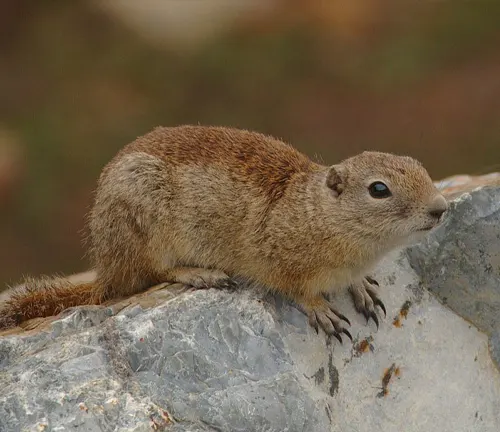
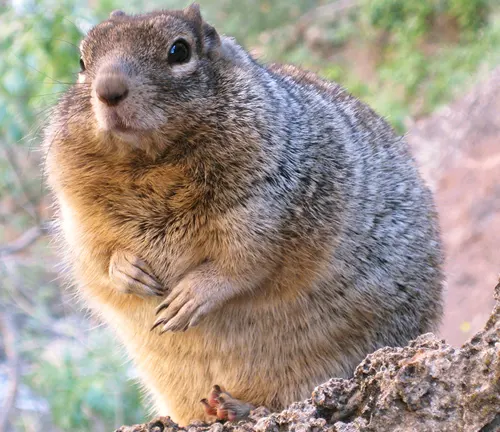
Rock Squirrel
(Otospermophilus variegatus)
While not exclusive to California, the Rock Squirrel is found in parts of the state.
Its range extends beyond California to include southwestern United States and northern Mexico.
Merriam’s Antelope Squirrel (Ammospermophilus leucurus merriami):
Although not a direct relative of the California Ground Squirrel, the Merriam’s Antelope Squirrel is found in some parts of California, particularly in desert regions.
Recognizable by its small size and distinctive white tail.
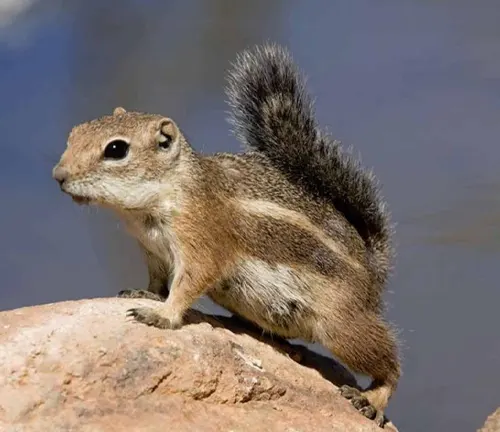
Frequently Asked Questions (FAQs)
1. What is a California Ground Squirrel?
The California Ground Squirrel (Otospermophilus beecheyi) is a species of ground squirrel native to the western United States, particularly in California. It is known for its distinctive appearance and burrowing behavior.
2. Where are California Ground Squirrels Found?
California Ground Squirrels are primarily found in the western United States, including California, Oregon, and parts of Nevada. They inhabit a range of environments, from grasslands to woodlands.
3. What Do California Ground Squirrels Eat?
California Ground Squirrels have an omnivorous diet, including seeds, nuts, fruits, insects, and small vertebrates. Their feeding habits contribute to the ecological balance in their habitats.
4. Are California Ground Squirrels Harmful?
While they play a natural role in ecosystems, California Ground Squirrels can pose challenges in certain contexts. Their burrowing habits may cause damage to landscapes, crops, and structures.
5. How Can I Identify a California Ground Squirrel?
California Ground Squirrels have a mottled fur coat with shades of brown, gray, and cream. They are small in size, typically around 9 to 11 inches, with a bushy tail. Their appearance is distinct and easily recognizable.
6. Are California Ground Squirrels Protected by Law?
The legal status of California Ground Squirrels varies by region. Some areas may have regulations protecting them, while others may allow measures to manage their populations.
7. What Diseases Do California Ground Squirrels Carry?
California Ground Squirrels can carry diseases such as plague. While the risk of transmission to humans is relatively low, it’s essential to be aware of potential health concerns associated with their presence.
8. How Can I Coexist with California Ground Squirrels?
Coexisting with California Ground Squirrels involves understanding their behavior and implementing humane and responsible measures. This may include habitat modification, exclusion, and other integrated pest management strategies.
9. Are California Ground Squirrels Social Animals?
Yes, California Ground Squirrels exhibit social behaviors. They are often seen engaging in activities such as foraging together and maintaining territories. Understanding their social dynamics is key to effective management.
10. What Are Some Methods for Managing California Ground Squirrel Activity?
Methods for managing California Ground Squirrels include habitat modification, exclusion, frightening devices, repellents, toxicants (with caution), shooting (where legal), and trapping. The choice of method depends on the specific context and goals.


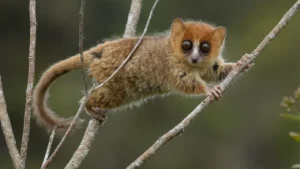
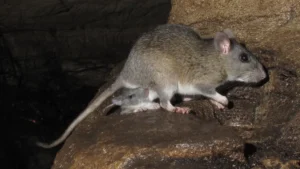
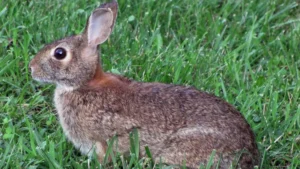





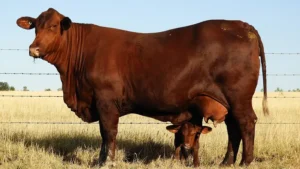
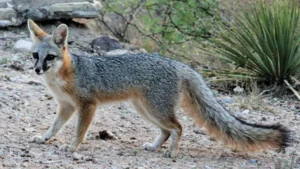
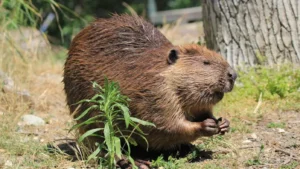

Leave your comment